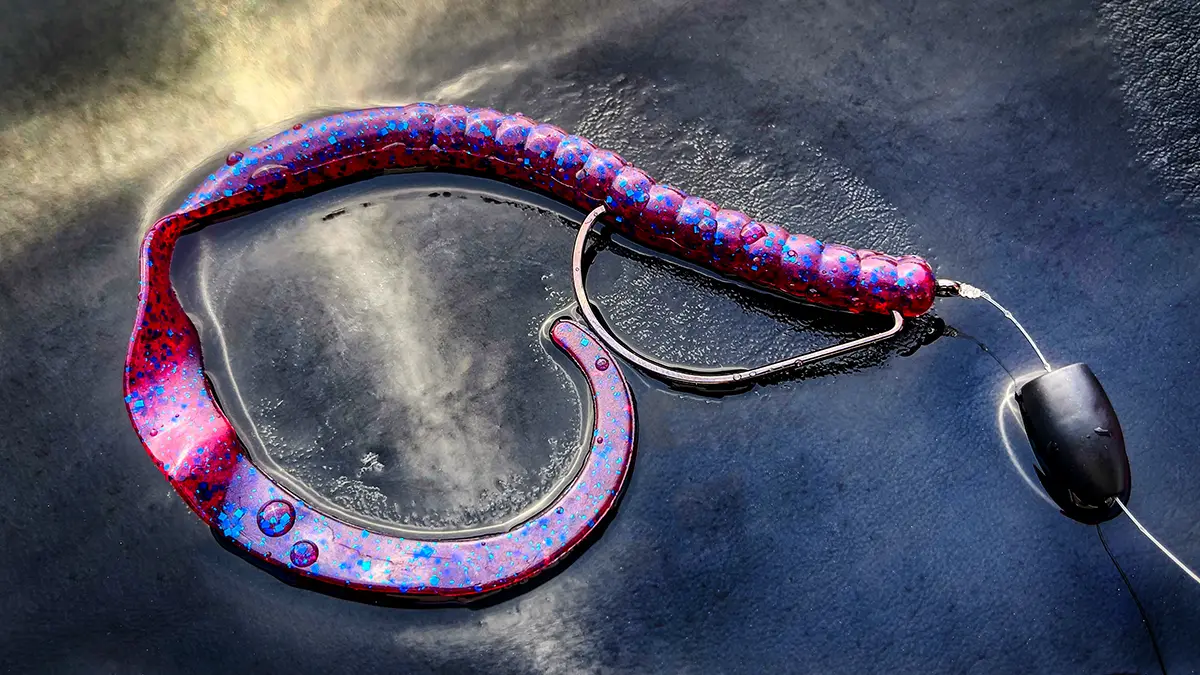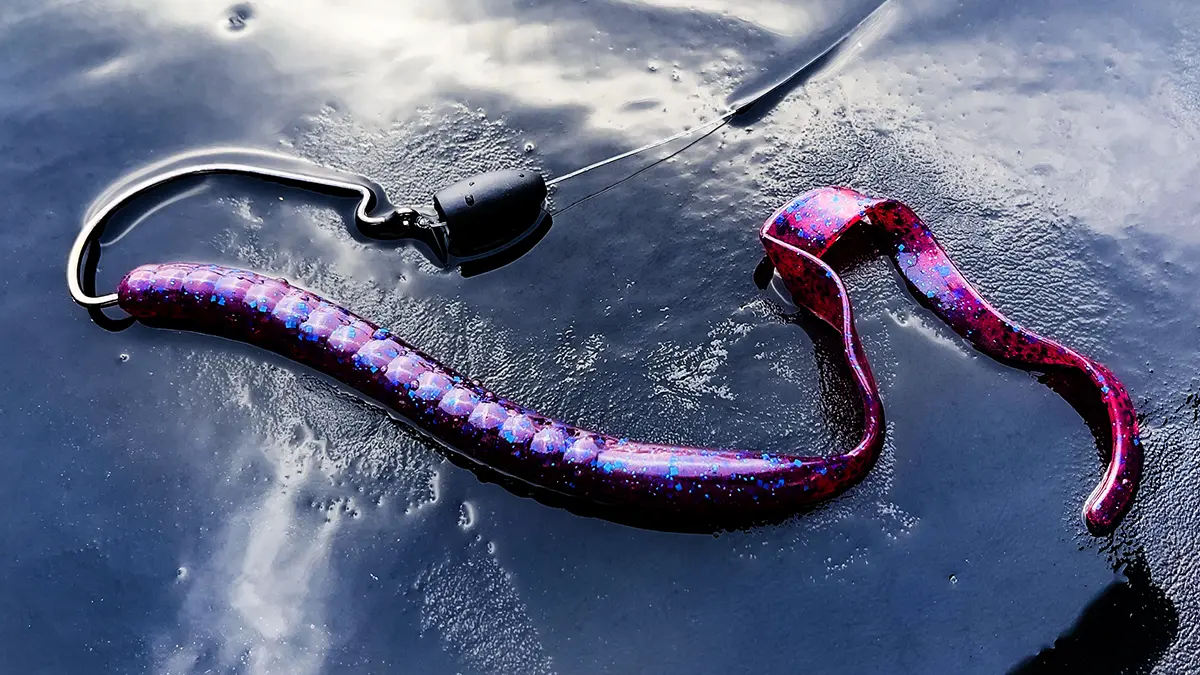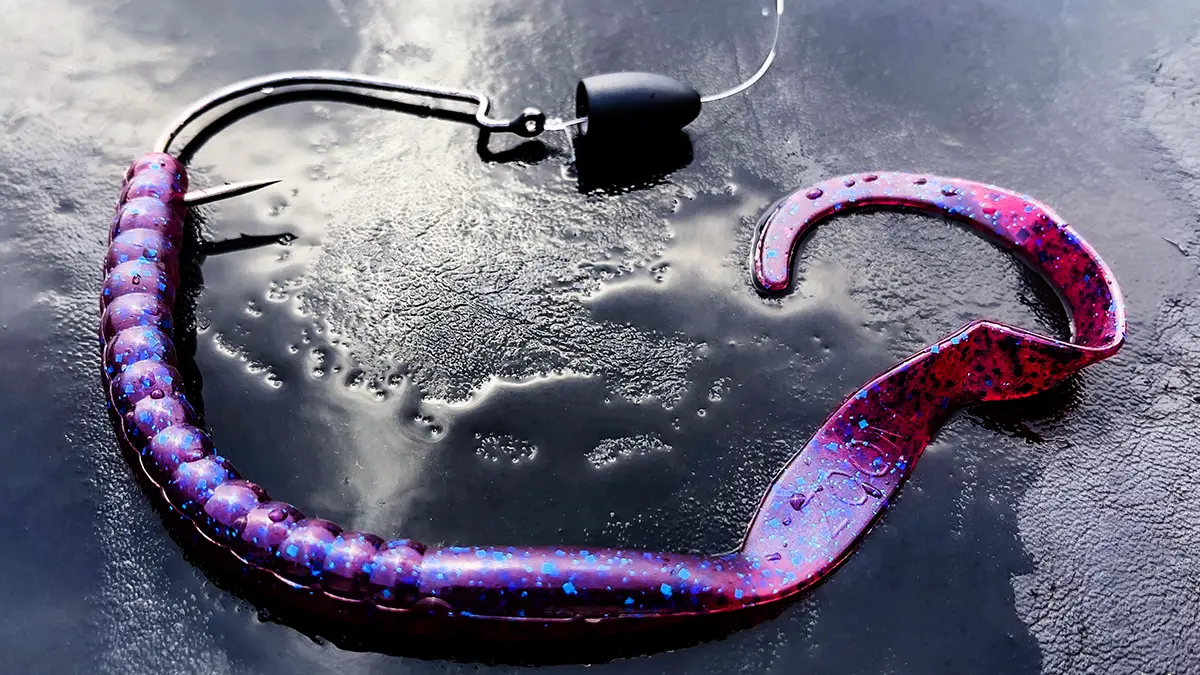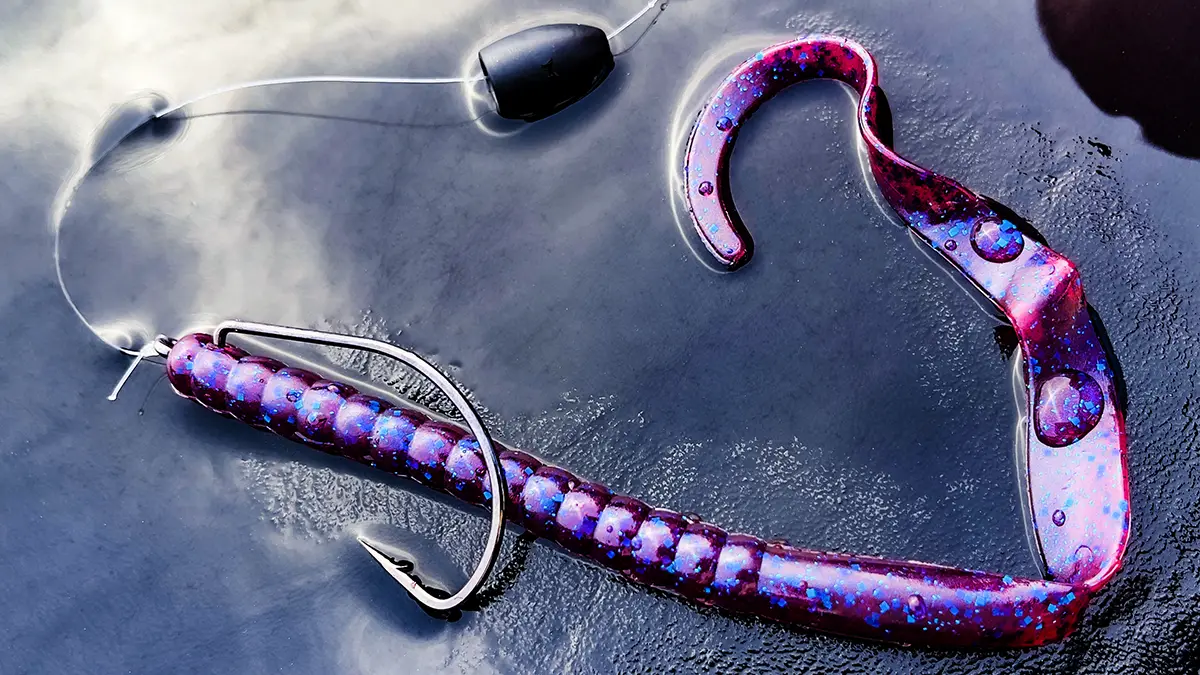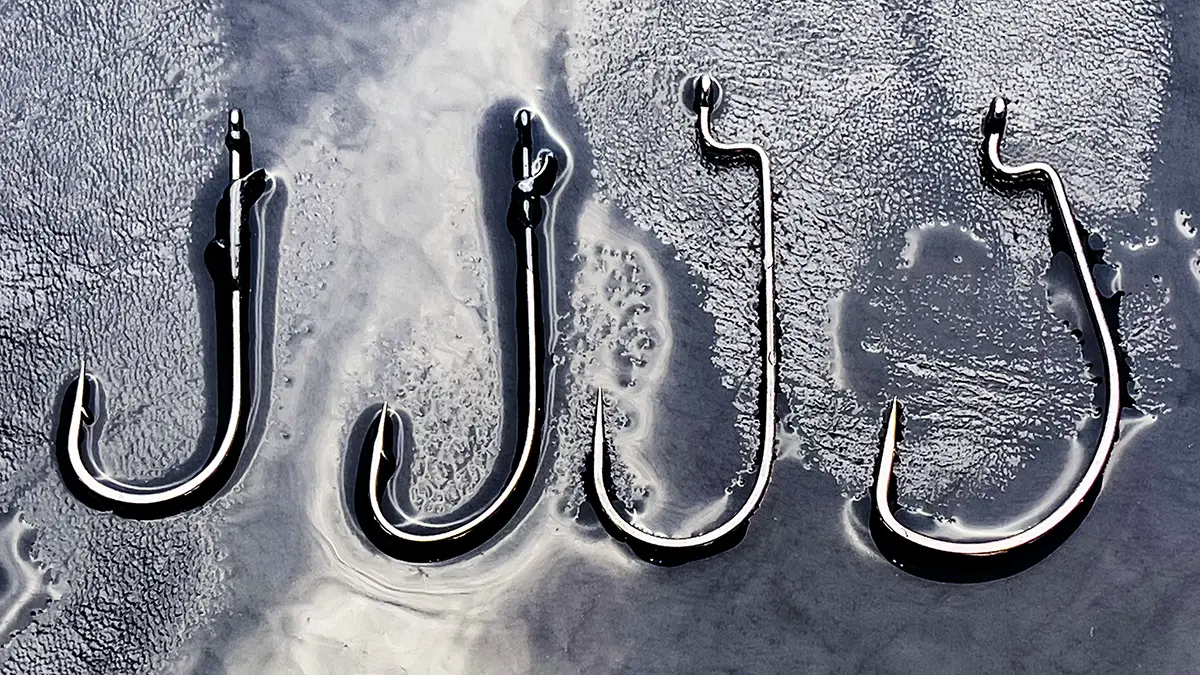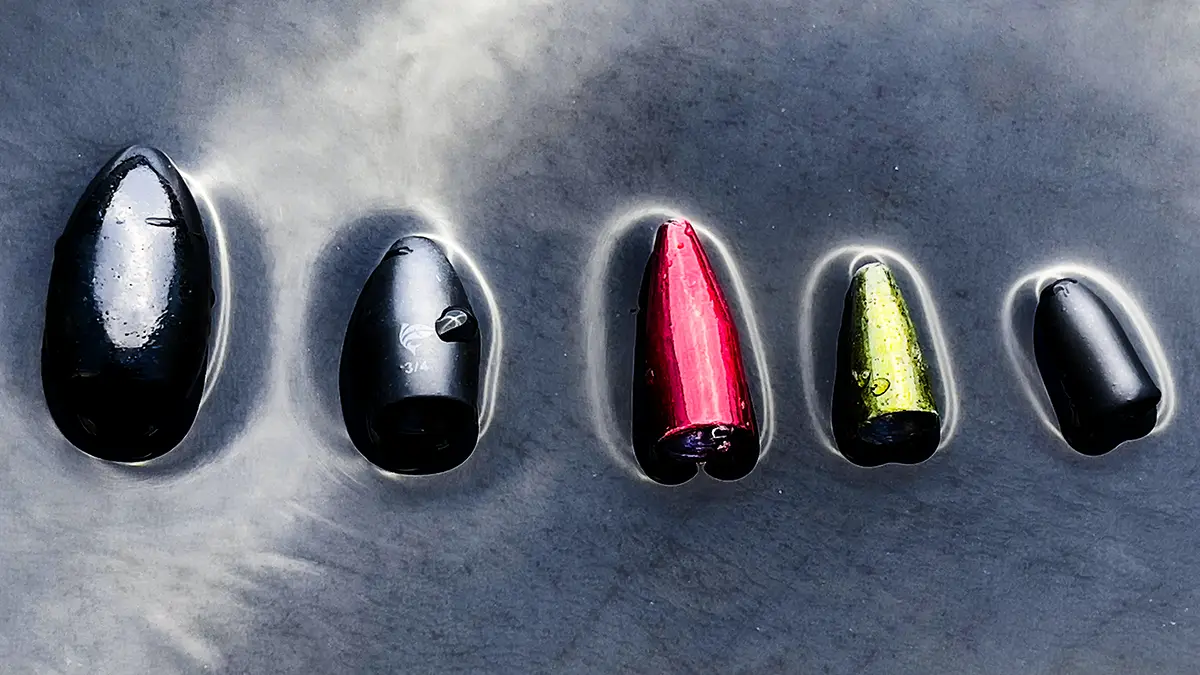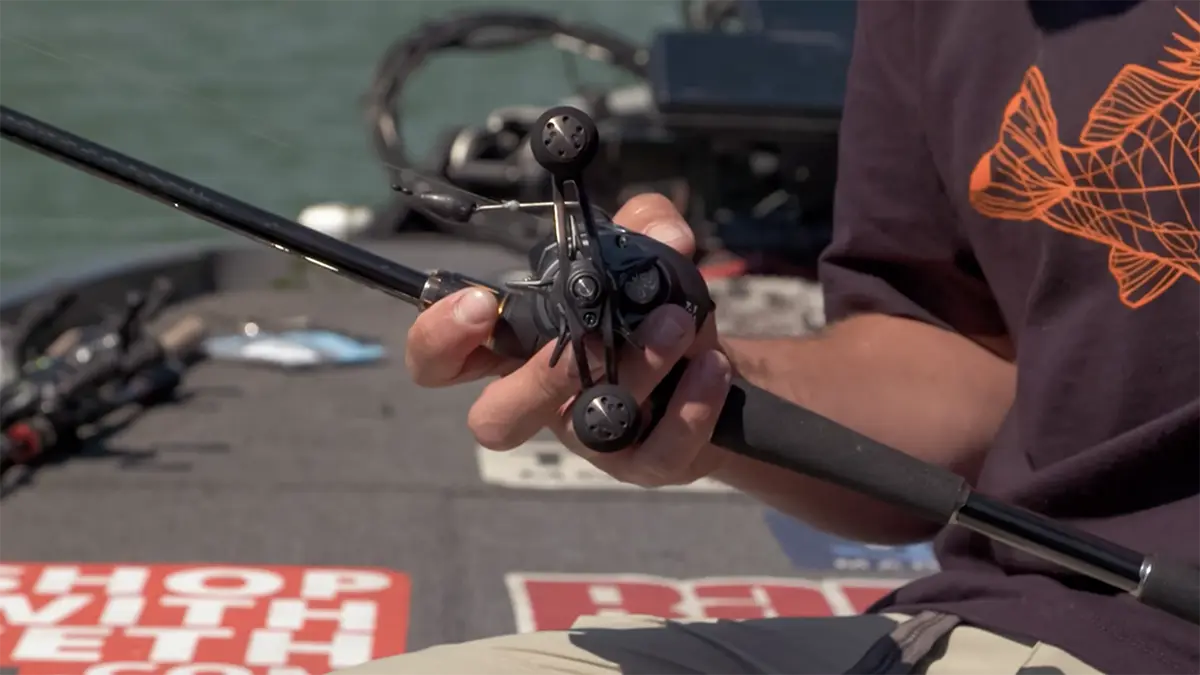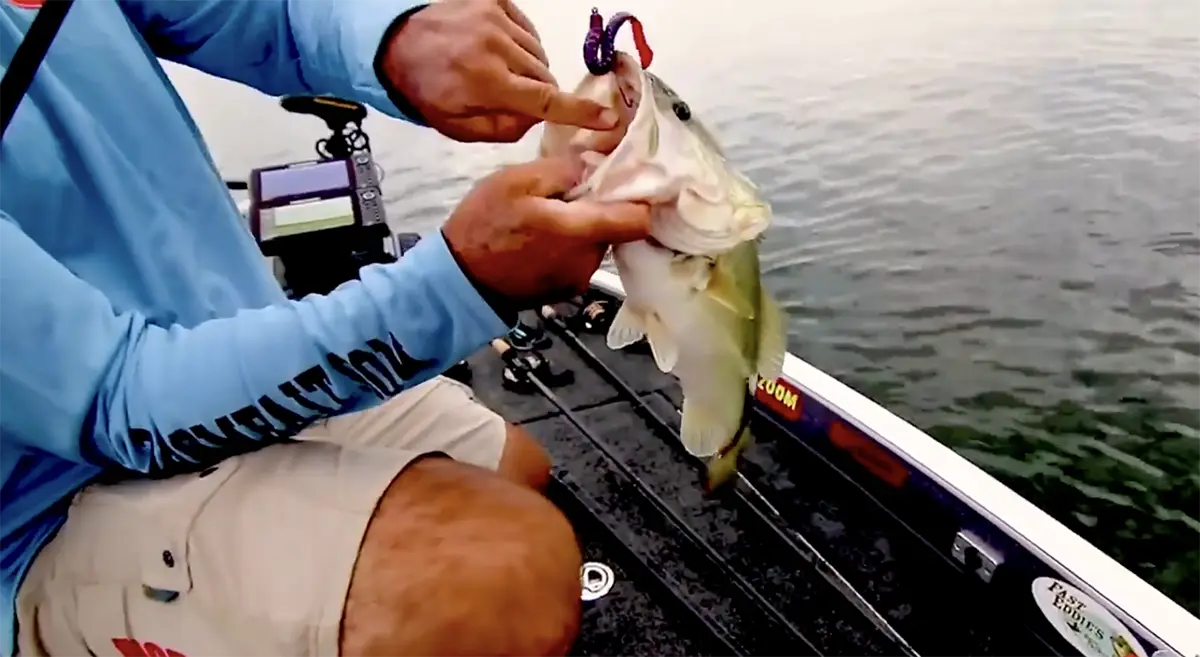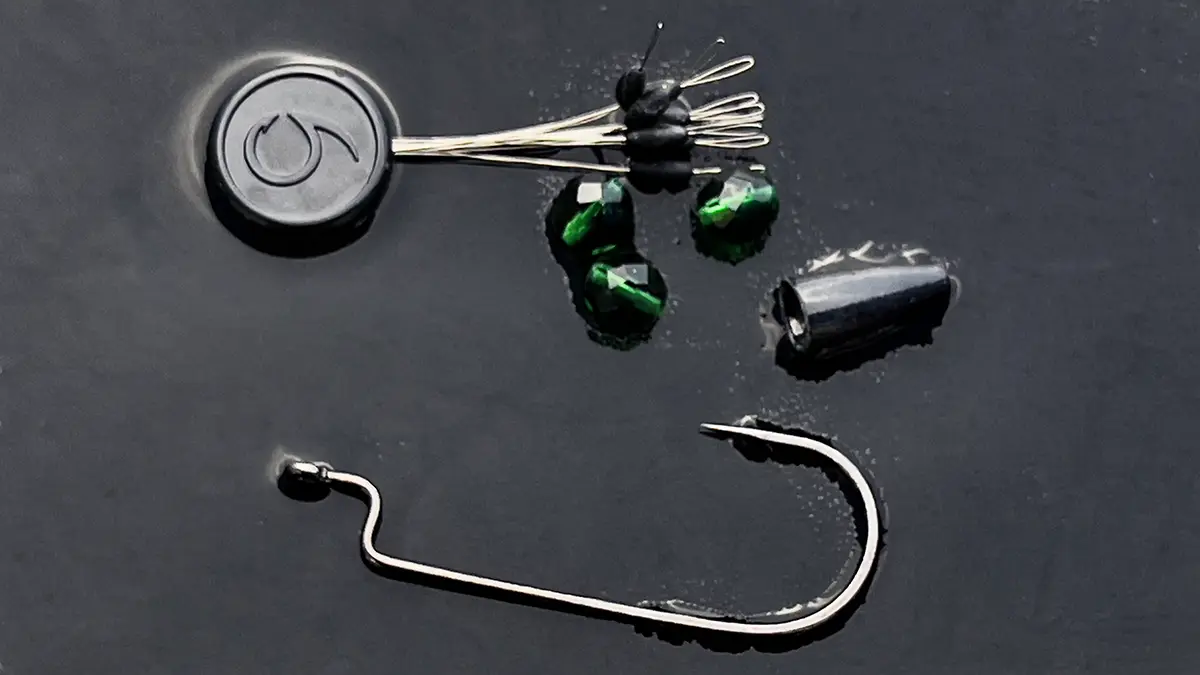The Texas rig not only gives anglers a method for fishing a bait through thick cover without getting snagged, but it also gives anglers a fishing rig that can literally be fished everywhere and anytime. It’s the most versatile rig in fishing and you can fish it in inches of water or 70 feet of water by just adjusting your slip sinker.
It’s pretty simple to rig with the right gear, and it is as equally effective from the bank as it is from a boat. So if you poke around in creeks, rivers, ponds and small lakes, or run around on large reservoirs, you really need to be proficient fishing Texas rigged bass lures like creature baits, big worms, craws and more.
It’s one of the first rigs a bass angler should master because of not only how versatile it is but how big a fish have been caught on a Texas-rigged plastic. You can cast it, pitch it, flip it, punch it, and put it in every hiding place a bass might use. It fishes through wood, docks, grass, rock and more.
How to Rig a Texas Rig
Basically all you need is a bullet-shaped slip sinker, an offset or straight shank hook and a soft plastic bait of your choice. From there it’s just a few simple steps and you’re on your way to fishing through any cover a bass fishing body of water can throw at you.
Step 1: Thread the hook point into the nose of the worm
This is simple and straight forward. Take the point of the hook down through the middle of the worm at the nose and then come out the side about 1/8 to 1/4 inch down.
Step 2: Poke the hook point back out of the side of the worm
Poke the hook out the side and start pulling the whole hook back out of the worm through that new exit hole.
Step 3: Pull the whole hook through until eye is at nose and turn hook
Once you pull the whole hook through bring the worm over the elbow of the offset hook or over the keeper on the straight shank hook, and then twist the hook so the point faces back towards the worm and the eye is at the nose of the worm.
Step 4: Bury the point into the plastic to keep it guarded
Lay your hook next to the worm and see where the bend meets at the worm, then kink the worm and put your hook at that precise point and push into worm until worm is perfectly straight on the hook and the point is covered.
Texas rig hooks
We think the best hooks for Texas rigging are offset worm hooks or EWG hooks. An offset worm hook just means it has a 90 degree elbow that is made just for Texas rigging. I like a worm hook if I’m Texas rigging a thin worm like a ribbon tail or straight tail worm. I like an EWG if I’m Texas rigging a larger soft plastic lure like a creature bait or beaver style flipping bait. If there is a lot more plastic to clear when you set the hook then you need a larger gap (i.e. Extra Wide Gap).
Some of our favorite hooks for Texas rigs are as follows:
- VMC Worm Hooks
- BKK Basilisk Worm Hooks
- Lazer Trokar HD Worm Hooks
- Berkley Fusion 19 EWG Hooks
- VMC Heavy Duty Wide Gap Hooks
- Gamakatsu Offset G-Lock Hooks
Texas rig weights
A good bullet shape slip sinker is one of the critical parts of Texas rigging. Too heavy and you could stay pinned in cover a lot more and constantly having to pop through the cover. If you go too light, sometimes you can penetrate through the cover. So you have to match the weight to what you are fishing and the mood of the fish. If the cover is more sparse and the water is clear, I will go for the lightest weight I can use and still fish my Texas rigged worm effectively.
Also, the lighter the weight, the more natural the lure will act.
We like a tungsten weight because it transmits contact a lot better than lead. And tungsten weights are generally a pretty good percentage smaller than a lead sinker of the same weight.
Some of our favorite weights include the following:
- WOO! Tungsten Never Chip Flipping Weights
- Gamakatsu G-Shield Tungsten Weights
- Ark No Chip No Insert weight
- Freedom Tackle Tungsten Worm Weights
- VMC Tungsten Flippin Weights
Texas rig setup for fishing
The setup for Texas rigging is pretty simple really. We like baitcasters, but the other nice thing about a Texas rig is it fishes just fine on spinning tackle too. You want a rod that has some backbone because you might have to drive a hook through plastic and into fish in heavy cover or with a lot of line out that might stretch on you.
A longer rod also will help you take up a lot of slack quickly on the hookset as fish will often pick up a Texas rig and run. Somewhere around a 7-foot Medium Heavy rod with a little tip action is best to give you some casting control. You want the backbone to drive a good hook. You really got to hit the fish on the hookset with a Texas rig because you need to get the hook out of the plastic that is keeping the rig weedless.
I like 15-pound to 20-pound fluorocarbon for Texas rigs, but I will occasionally go down to 12-pound line in clear water and fishing out deep to get the worm down to the bottom quicker and fish a lot more naturally.
Texas rig fishing
I basically do two things with a Texas rig as far as retrieves when casting a worm or something like that. I will either make a long cast, let the worm hit bottom, and then start lifting my rod to swim the worm up off the bottom a foot or two and then take up my slack with my reel as it falls to the bottom.
Or I will let the worm hit bottom and then just pull it inches at a time with my rod with a super slow side sweeping motion. I generally like to keep my rod in front of me so I’m always in a position to reel down and set. So I will move it a few feet or a few inches and then collect my line and re-center.
When I’m fishing close cover with pitches and flips. I will always keep my rod at about 10 o-clock as much as possible because you never know when a fish will bite and you need to be quick on the draw before they wrap you in cover. So if you move your rod up to high or too far off to the side, you have to come back down to take up slack and set the hook. Those precious seconds result in bad hooksets and lost fish.
Texas rig modifications
A lot of anglers like a bobber stop in front of their slip sinker when fishing tight to cover. That keeps the weight, hook and plastic all together at all times so things won’t wrap on branches. And it helps the bait go in and out of thicker cover a lot easier.
Some folks will add beads, rattles or other noise attractors.
A variation of the Texas rig is something called Tex-posing. Basically instead of burying the hook into the plastic at the end of the rigging sequence, they will push the worm through and lay the flat part of the hook point on the back of the plastic and then just push a little tiny bit of the point into the plastic. This results in a much easier release of the hook from the plastic when you set the hook. But the concession is that you also will snag more because the hook point comes out easier. So it’s a trade off. Tex posing is good when the cover is a little more sparse, say on boat docks or bank grass.
There are lots of modifications that can be made when you are talking about tricks to get more bites in heavy cover. Also, check out our article Carolina Rig vs Texas Rig.


